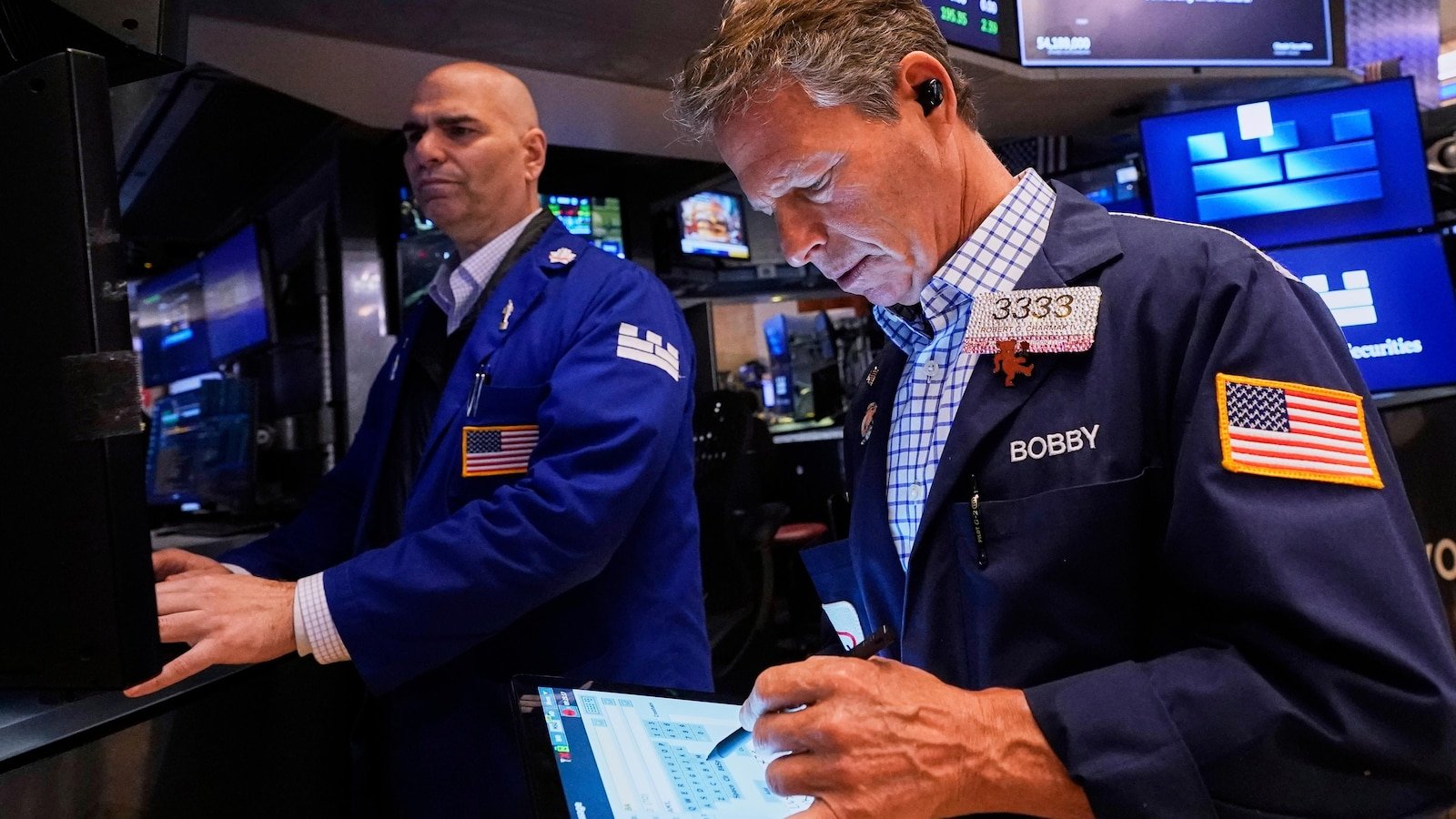Wall Street extended his profits to a ninth consecutive day, marking his longest winning streak since 2004 and claiming the land he lost since President Donald Trump increased his commercial war in early April. Friday’s demonstration was stimulated by a better report than expected about the labor market and the resurgual hope of an increase in commercial dismissal with China. The sANDP 500 rose 1.5%. The Dow Jones industrial average added 1.4%, and the Nasdaq compound increased 1.5%. Treasury yields increased in the bond market after the government reported that employers added more prognosis jobs in April.
This is a last -minute news update. The previous AP story continues.
The actions joined in the afternoon quoting on Wall Street on Friday after a Report on the United States labor market.
The sANDP 500 won 1.6%, putting the index on the way to a ninth consecutive day of profits. That would mark the longest winning streak for the reference index in two decades.
The Dow Jones industrial average increased 582 points, or 1.4%, at 2:35 pm east. The Nasdaq compound increased 1.8%.
The profits were wide. Approximately 90% of the shares and each sector in the SANDP 500 Advanced. Technological actions were among the companies that made the best uprising. Microsoft rose 2.6% and Nvidia increased by 3%. Apple, however, fell 4% after the iPhone manufacturer estimated that tariffs will cost him $ 900 million.
Banks and other financial companies also obtained solid profits. JPMorgan Chase increased 2.4% and Visa added 1.3%.
Employers added 177,000 jobs in April. That marks a slowdown in the hiring of March, but it was solidly better than economists expected. However, the latest labor figures still do not reflect the effects on the economy of President Donald Trump’s general tariffs against United States business partners. Many of the most severe tariffs that were supposed to be in force in April were delayed for three months, with the remarkable exception of tariffs against China.
“We have already seen how financial markets will react if the administration advances with its initial rate plan, so unless they take a different tactic in July when the 90 -day break expires, we will see market shares similar to the first week of April,” said Chris Zaccarelli, director of investments at Northlight Asset Management.
The sANDP 500 fell 9.1% during the first week of April when Trump announced an important escalation of his commercial war with more rates. The market has now recovered its losses since then, helped by a series of resistant profits reports of US companies, they expect the decallation of commercial tensions with China and the expectations that the Federal Reserve can still reduce rates several times this year.
The labor market is closely monitored by the signs of stress in the midst of commercial war tensions. Solid employment has helped feed the solid consumer spending and economic growth in recent years. Economists are now concerned about the impact that import taxes will have on consumers and companies, especially how the highest costs will harm hiring and spending.
The economy is already showing signs of stress. The US economy shrunk at an annual rate of 0.3% during the first quarter of the year. It was slowed by an increase in imports while companies tried to get ahead of Trump’s rates.
The current round of tariffs and the nature of Trump’s policy have eclipsed planning for companies and homes. Companies have been reducing and withdrawing financial forecasts due to uncertainty about the amount of rates that will cost them and how much they will squeeze consumers and SAP spending.
The hopes continue that Trump goes back some of their tariffs after negotiating trade agreements with other countries. China has been a key objective, with 145%tariffs. Your Ministry of Commerce said Beijing is evaluating Ovenia of the United States with respect to rates.
Investors had a relatively quiet day of profit reports after an occupied week. Exxon Mobil increased 0.6%, recovering from an early slide, after informing its The lowest profits of the first quarter dwarves. The Rival Chevron increased 1.6% after he also reported his lower gain of the first quarter in years.
The fall in crude oil prices has weighed in the sector. The prices of crude oil in the US. They fell below $ 60 per barrel this week, which is a level in which many producers can no longer obtain profits.
Block collapsed 20.5% after informing a strong drop in the profits of the first quarter that did not reach the forecasts of the analysts. The Financial Technology Company Behind Cash APP cited a setback in consumer spending on trips and other discretionary items as a key reason for the results.
Treasury yields increased in the bond market. 10 -year treasure yield increased to 4.32% of 4.22% on Thursday night.





